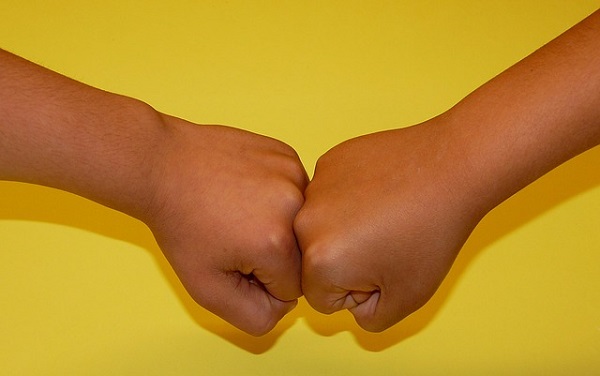
“He took my toy”. “She hit me”. “She’s not being nice to me.”
If you have young children or work with them, you probably hear these types of complaints more than a few times a day. You may be feeling a little bit fed up, trying to sort out the same childhood quarrels repeatedly. If so, I have good news for you: ‘conflict resolution’ is a skill that can be taught and practised. Equipping young children with skills involved in conflict resolution will not only give you a bit of peace, it will also educate them on important life skills that will hugely benefit them right throughout their lives.
Which skills exactly will children gain from practicing conflict resolution?
-
Emotional awareness
-
Stress management
-
Communication skills – including verbalising thoughts, debating and listening skills
-
Problem solving and negotiating skills
-
Creative thinking
-
Open mindedness
-
Respect for others
-
Team work and successful relationship building
WARNING: When attempting to help children resolve conflicts, you will need to show patience!
You might laugh, but it’s true! It can be very tempting to end a quarrel with a simple “Right, that’s enough!”, “No more fighting” or “This is what’s to happen, and I don’t want to hear another word about it!” All that happens here is one child tends to get their way and the other is left feeling aggrieved, which will probably result in future conflict, and nobody has learned a thing from it.
Everybody - children and adults alike - needs to feel understood, respected and supported in some way. Conflict resolution is trying to come to a solution that everyone can feel happy or at least satisfied with.

So how can we introduce the practice to children?
-
Recognising conflict - Read stories or perform simple puppet shows involving conflict. Discuss the characters’ behaviours, inviting the children to comment upon them. Encourage recognition of good and undesirable behaviours, and brainstorm possible solutions to the problems posed.
-
Desirable behaviours – Keep things light-hearted with a fun game I like to play with the kids in my class, ‘Cool Cats, Mad Monkeys.’ Create pretend-stressful scenarios and encourage the children to react to them either as a ‘Cool Cat’ or a ‘Mad Monkey. Afterwards, discuss which behaviour is more desirable, and why. Humour is a great way of diffusing angry feelings.
-
Conflict guidelines - Draw up a list of guidelines to follow when actual conflicts arise. Slowly and clearly talk through each of the steps, perhaps practicing them with simple role-play scenarios. Repeated practice will help children to recall the steps in the heat of an argument and may even become their automatic response. The following is an example list of guidelines:
1. Stop, ‘COOL CATS!’ – As soon as children realise they are upset with someone, teach them to put their hands up, and in a clear voice say a phrase such as ‘COOL CATS!’ Everyone involved takes a few seconds to cool off and calm down. Stress only ignites aggressive behaviour, so this time out helps to alleviate some of that.
2. Talk and listen – During practice, agree amongst you that the child who called a ‘Cool Cats’ time gets to speak first. Practice ways of stating exactly the behaviour or incident that has upset them and how it has made them feel. The other child listens without interrupting. When it is their turn, they should first acknowledge the first child’s feelings and then state their case.
3. Friends first – Encourage children to be honest. If they realise they have made a mistake, show them how to acknowledge it by stating their wrong-doing and apologising. Friendship is more important than a silly argument.
4. Work together – Together, the children think of possible solutions to their problem and find one that’s agreeable to both of them.
5. Action – Put the solution into action.
6. Help – Let the children know you are there to help if they need it.
Of course, these steps will take practice, and children will most likely need your help and reminders for quite a while before they are ready to go it alone. Hence, the need for PATIENCE! Make sure they follow through with their solution, and remember to recognise and praise their efforts.
-
Promote friendship – Talk to your children about what it means to be a good friend. Naturally, avoiding conflict is preferable to resolving it.
-
Lead by example – Try to set good examples by treating others with respect and staying cool under pressure.
And finally, I leave you with a little saying I have to go with my game above: “It’s the cool cat who gets the cream and the mad monkey who’s left to scream!”





